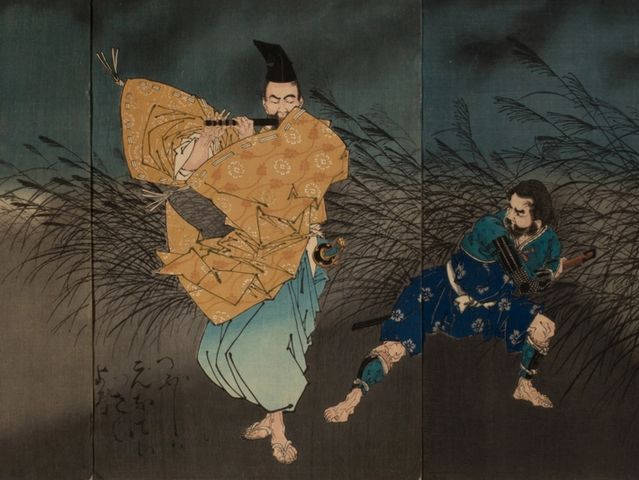(Japanese, 1839–1892)
Tsukioka Yoshitoshi was the last great master of the traditional Japanese color woodcut genre known as ukiyo-e. Yoshitoshi came of age as an artist during Japan’s dramatic cultural transformation in the 1860s, after the country opened to international trade after two hundred years of isolation. Just as his country struggled to reconcile its reverence for tradition with the realities of the modern world, Yoshitoshi navigated a range of traditional and contemporary themes in his prints: the heroism of samurai warriors, poetic images of figures in nature, female beauty, historic accounts, ghost stories, and the horrors of the battlefield. Across his diverse output, he masterfully incorporated Western visual concepts of foreshortening and perspective that were popular during the Meiji period (1868–1912).
The museum owns the largest collection of Yoshitoshi’s prints—more than 1,000—outside of Japan. The selection below traces the arc of the artist’s career, covering his early practice through the maturation of his style.
